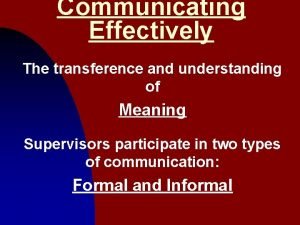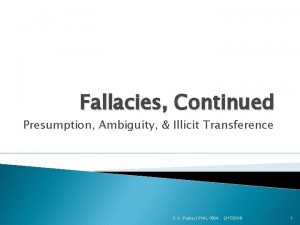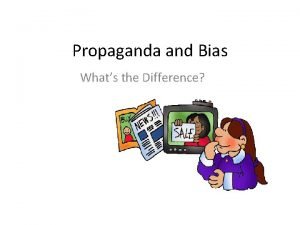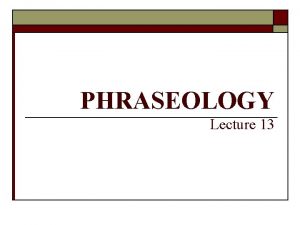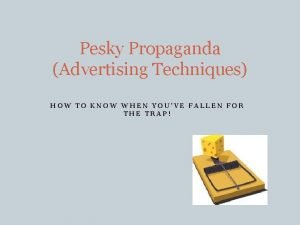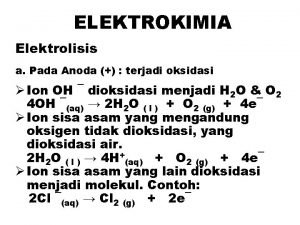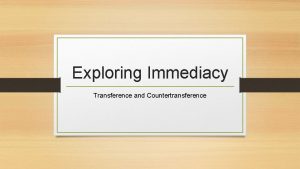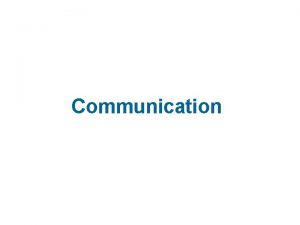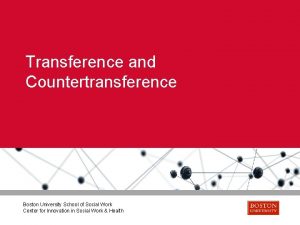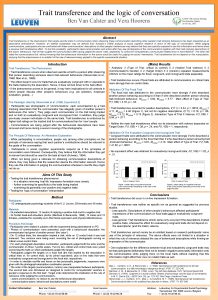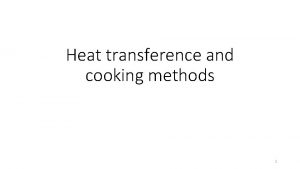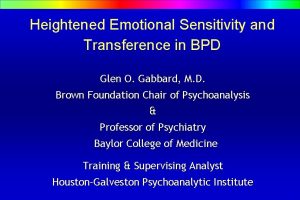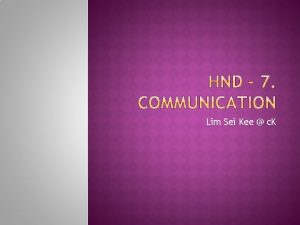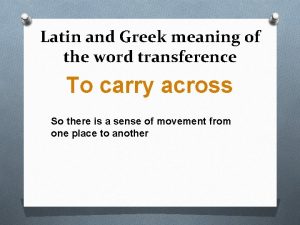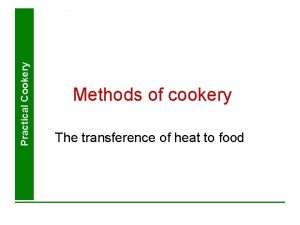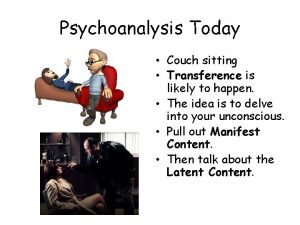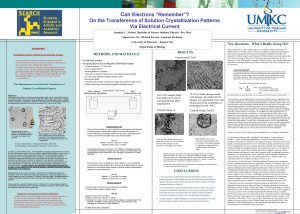Communication Communication o o The transference and understanding

























- Slides: 25

Communication

Communication o o The transference and understanding of meaning Communication, however, is more than merely imparting meaning. It must also be understood. Good communication is essential to any group’s or organization’s effectiveness. Poor communication is probably the most frequently cited source of interpersonal conflict. Individual spend nearly 70% of their waking hours in communicating-writing, reading, speaking, listening. Perfect communication never achieved in practice. 2

Functions of Communication n n Communication serves four major functions within a group or organization. They are: Control: Organizations have authority hierarchies and formal guidelines that employees are required to follow. Motivation: Fosters motivation by clarifying to employee’s what is to be done, how well they are doing and what can be done to improve performance if its subpar. Emotional expression: Communication provides a release for the emotional expression of feelings and fulfillment of social needs. Members show their frustrations and feelings of satisfaction. Information: Communication performs role in facilitating decision making by providing information. 3

The Communication Process o Communication Process: The steps between a source and a receiver that resulting the transference and understanding of meaning. o The channel is the medium through which the message travels. It is selected by the sender. Channels are of two types. n Formal channels: Communication channels established by an organization to transmit messages related to the professional activities of members. n Informal channels: Communication channels that are created spontaneously and that emerge as responses to individual choices. 4

The Communication Process (Contd. ) o The key parts of communication process are: 1. Sender 2. Message 3. Encoding 4. Channel 5. Receiver 6. Decoding 7. Noise 8. feedback o The sender initiate a message by encoding a thought. This is the actual physical product. The channel is the medium through which the message travels. The receiver is the object to whom the message is directed. The receiver decode the message. Noise represents communication barriers. The possible noise sources includes perceptual problems, semantic difficulties or cultural differences. The final link in the process is a feedback. It determines whether understanding has been achieved. 5

Direction of Communication o Downward: Communication that flows from one level of a group or organization to a lower level. o Upward: Upward communication flows to a higher level in the group or organization. o Lateral: When communication takes place among members of the same work group, among members of the work group at the same level, among managers at the same level or among any horizontally equivalent personal, we describe it as a lateral communication. 6

Interpersonal Communication o There are three basic methods to transfer meaning between and among each other. 1. Oral Communication 2. Written Communication 3. Nonverbal Communication o Oral Communication: The chief means of conveying messages is oral communication. Speeches, formal one-on -one and group discussions, and the informal rumor mill or grapevine are popular forms of oral communication. n The advantages of oral communication are speed and feedback. n The major disadvantage of oral communication Is the distortion of the contents of the messages. 7

Interpersonal Communication (Contd. ) o Written Communication: Written communications include memos, fax, email, letters, periodicals, notices, instant messaging, or any other device that is transmitted via written words and symbols. n Written communications are often tangible and verifiable. n Written communications are more likely to be well thought out, logical and clear. n Written communications are time consuming. n Written communication does not have a built-in feedback mechanism. 8

Interpersonal Communication (Contd. ) o Nonverbal communication: Includes body movements, the intonations, facial expressions and the physical distance between the sender and the receiver. o Every time we verbally give a message to someone, we also impart a nonverbal message. In some instances the nonverbal component may stand alone. For example, a glance, a stare, a smile, a frown and a proactive body movement all convey meaning. o Every body movement has a meaning and no movement is accidental. 9

Interpersonal Communication (Contd. ) o Nonverbal communication (Contd. ): o The two most important messages that body language conveys are (1) the extent to which an individual likes another and is interested in his or her views and (2) the relative perceived status between the sender and the receiver. o Body language adds to, and often complicates, verbal communication. o There is no record of nonverbal communication. o One should look for nonverbal cues as well as listen to the literal meaning of the sender’s words. 10

Organizational Communication o Formal Small-Group Networks: Formal organizational networks can be very complicated. To simplify our discussion, we have condensed these networks into three common small groups. n The Chain: The chain rigidly follows the formal chain of command. n The wheel: It stimulates the communication network on a team with a strong leader. n The all-channel: The all-channel network permits all group members to actively communicate with each other. The all-channel network teams, in practice, are self-management teams in which all group members are free to contribute and no one person takes on a leadership role. 11

Organizational Communication (Contd. ) o The Grapevine: An informal but important communication system. It has three main characteristics. 1. It is not controlled by management. 2. It is perceived by most employees. As being more believable and reliable than formal communiqués issued by top management. 3. It is largely used to serve the self interest of the people within it. o Rumor: It emerges as a response to situations that are important to us, when there is ambiguity and under conditions that arouse anxiety. n Rumors can not be entirely eliminated. Management can only minimize the negative consequences of rumors by limiting their range and impacts. 12

Organizational Communication (Contd. ) o Computer- Aided Communication: Communication in today’s organizations is enhanced and enriched by computer aided technologies. These include: n E mail: Electronic mail (Email) uses the internet to transmit and receive computer generated text and documents. n Instant Messaging: Cell phones, Pump pilots etc. n Intranet and Extranet Links: o Intranets are private, organization-wide information networks that look and act like a website but to which only people in an organization have access. o Extranets: Links that connect internal employees with selected suppliers, customers, and strategic partners. 13

Organizational Communication (Contd. ) o Computer- Aided Communication (Contd. ) n Videoconferencing: It is an extension of intranet and extranet systems. It permits employees in an organization to have meetings with people at different locations. o Knowledge Management : This is a process of organizing and distributing an organization’s collective wisdom. So that the right information gets to the right people at the right time. n It needs to develop computer databases of pertinent information that employees can readily access. More knowledge isn’t necessarily better knowledge. 14

Choice of Communication Channel o o o o o Formal Reports, bulletins Memos, Letters Pre coded speeches Electronic Mail Online discussion – groups, group wave Voice Mail Live speeches Telephone Conversation Videoconferences Face to face conversations Channel Richness: The amount of information that can be transmitted during a communication episode. 15

Barriers to Effective Communication There a number of barriers that can retard or distort effective communication. They are: o Filtering: A sender’s manipulation of information so that it will be seen more favorably by the receiver. o Selective Perception: Receiver in the communication process selectively see and hear based on their needs, motivation, experience, background and other personal characteristics. Actually we don’t see reality; we interpret what we see and call it reality. 16

Barriers to Effective Communication (Contd. ) o Information Overload: A condition in which information inflow exceeds individual’s processing capacity. n Individuals have a finite capacity for processing data. Emails, instant messaging, phone calls, faxes, meetings etc. are the potential for today’s managers and professionals to suffer from information overload. n Overloaded managers tend to select out , ignore, pass over or forget information or they may put off further processing until the overload situation is over. And the result is lost information and less effective communication. o Emotions : How the receiver feels at the time of receipt of a communication will influence how he /she interpret it. The same message received when you are angry is often interpreted differently from when you are happy. 17

Barriers to Effective Communication (Contd. ) o Language : Words mean different things to different people. Age, education, and cultural background are three of the more obvious variables that influence the languages, a person uses and the definitions he or she gives to words. n In an organization, employees usually come from diverse background. Further the grouping of employees into department creates specialists who develop their own technical jargons. n Senders tend to assume that the words and terms they use mean the same to receiver as they do to them. This assumption is often incorrect. o Communication Apprehension: Undue tension and anxiety about oral communication, written communication or both. n Communication apprehension is a more serious problem because it affects a whole category of communication techniques. 18

Current Issues in Communication o Communication Barriers Between Women and Men: v A larger percentage of women or men as a group talk in particular way or individual women and men are more likely to talk one way or the other. v Women speak and hear a language of connection and intimacy; men speak and hear a language of status, power and independence. v Men frequently complain that women talk on about their problems. Women criticize men for not listening. v Women present the problem to get support and connection, not to get the men’s advice. Men are often more direct than women in conversation. v Women tend to be less boastful than men. v Men incorrectly conclude that a woman is less confident and competent than she really is. Women do apologize more than men. They frequently use ‘’I’m sorry’’. 19

Current Issues in Communication (Contd. ) o Silence as Communication: Silence defined as an absence of speech or noise-has been generally ignored as a form of communication in OB because it represents inaction or nonbehavior. But it is not necessarily inaction. Nor is silence, a failure to communicate. It can, in fact, be a powerful from of communication. n Silence is a critical element of groupthink, in which it implies agreement with majority. n Failing to pay close attention to the silent portion of a conversation can result in missing a vital part of the message. n It is a powerful tool used by managers to signal disfavor by ignoring employees with ‘’silent insults’’ n Sometimes the real message in a communication is buried in the silence. 20

Current Issues in Communication (Contd. ) o Politically Correct” Communication: Most of us are acutely aware of how our vocabulary has been modified to reflect political correctness. For instance, most of us have cleansed the words handicapped, blind and elderly from our vocabulary-and replaced them with terms like Physically challenged, visually impaired and senior. n There is downside to political correctness. It can complicate our vocabulary, making it more difficult for people to communicate. n The terms garbage, quotas and women may be replaced with terms like Post consumer waste materials, educational equity and People of gender. The problem is that later group of term is much less likely to convey a uniform message than the words they replaced. n We must be sensitive to how our choice of words might offend others. 21

Current Issues in Communication (Contd. ) o Cross-cultural Communication: Effective communication is difficult under the best of condition. Cross-cultural factors clearly create the potential increased communication problems. A gesture that is well understood and acceptable in one culture can be meaningless in another. n Cultural Barriers: There are barriers caused by semantics. Words mean to different things to different people. n There are barriers caused by word connotations. Words imply different things in different languages. n There are barriers caused by tone differences. In some cultures, language is formal in others its informal. People speak differently at home, in social situation and at work. n There are barriers caused by differences among perceptions. People who speak different languages actually view the world in different ways. 22

Current Issues in Communication (Contd. ) o o Cross-cultural Communication (Contd. ) Cultural Context: Cultural context are of two types. o High context culture: Cultures that rely heavily on nonverbal and subtle situational cues in communication. o Low Context culture: Culture that rely heavily on words to convey meaning in communication. o Cultural Guide: To reduce misperception, misinterpretation and misevaluation to communicate with people from different culture, the following four roles may be helpful. 1. Assume difference until similarity is proven 2. Emphasize description rather than interpretation or evaluation. 3. Practice empathy. 4. Treat your interpretations as a working hypothesis. Possessing good listening skills is also critical to effective communication. 23

24

25
 What is transference
What is transference Transference and the understanding of meaning
Transference and the understanding of meaning Mark of transference
Mark of transference Projection psychology
Projection psychology Linguistic transference
Linguistic transference Illicit transference
Illicit transference Whats transfer propaganda
Whats transfer propaganda Phraseological units examples
Phraseological units examples Transference propaganda definition
Transference propaganda definition Sel galvani
Sel galvani Uta hagen questions
Uta hagen questions Transference
Transference What is propaganda bandwagon
What is propaganda bandwagon Risk transference
Risk transference Psychotherapy ap psychology
Psychotherapy ap psychology Hình ảnh bộ gõ cơ thể búng tay
Hình ảnh bộ gõ cơ thể búng tay Frameset trong html5
Frameset trong html5 Bổ thể
Bổ thể Tỉ lệ cơ thể trẻ em
Tỉ lệ cơ thể trẻ em Chó sói
Chó sói Thang điểm glasgow
Thang điểm glasgow Hát lên người ơi alleluia
Hát lên người ơi alleluia Môn thể thao bắt đầu bằng từ chạy
Môn thể thao bắt đầu bằng từ chạy Thế nào là hệ số cao nhất
Thế nào là hệ số cao nhất Các châu lục và đại dương trên thế giới
Các châu lục và đại dương trên thế giới Công của trọng lực
Công của trọng lực

